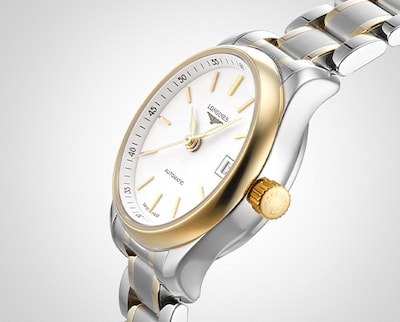In the broadest terms, there are basically two kinds of watch - those with quartz movements powered by batteries; and those with mechanical movements that are powered by energy generated by the motion of your arm, or by winding the crown.
Batteries in quartz watches will need replacing after a period of time (we recommend a battery change every two to three years), but the watch should maintain its accuracy until the battery starts losing its charge. Quartz movements are a lot cheaper to produce than their mechanical equivalents, which is why a lot of fashion watches and watches in the lower price brackets are usually powered by quartz movements.
Mechanical movements don't have batteries - instead they have a barrel (a small cylindrical box) that contains a mainspring (a thin metal coil). In an automatic mechanical watch, the swinging of a rotor attached to the movement winds the watch, creating tension in the mainspring, which becomes the power source. The same process occurs in a hand-wound watch, only the winding has to be done by hand by turning, or winding the crown.
During the 1970s and 1980s, quartz became very popular and people stopped buying mechanical watches, but over the last 25 years there has been a huge resurgence in mechanicals. Today, mechanical watches have more kudos than quartz watches. They're considered statements of taste and discernment - and as a result, they usually cost more than their quartz equivalents.

Tip: if you're not sure whether a watch is quartz or mechanical, look at the seconds hand. If it ticks, it's quartz; if its sweeps, it's mechanical.
Magnetism
If a magnetic field is especially strong, it influences the movement of a watch. For a Quartz watch, a high magnetic field will slow it down for a few seconds, however away from the magnetic field it will work normally again. In a mechanical or automatic watch, the magnetisation will disrupt the timing element and make the hair spring of the movement stick, which will result in the altering of the watches performance.
For a watch to be magnetised, it must be in contact with quite a strong magnetic field.
Tolerances
Automatic and mechanical watches are not exact, they keep time within a certain tolerance. A tolerance is the maximum amount of seconds the timepiece may gain or lose, per day.
Tolerances are different for each watch brand, and in some cases the different models across a brand. For further information regarding the tolerance of the model you are interested in purchasing or have purchased, our brand representatives in our showrooms would be happy to assist you. Alternatively, please refer to your owner manual provided with your new purchase.